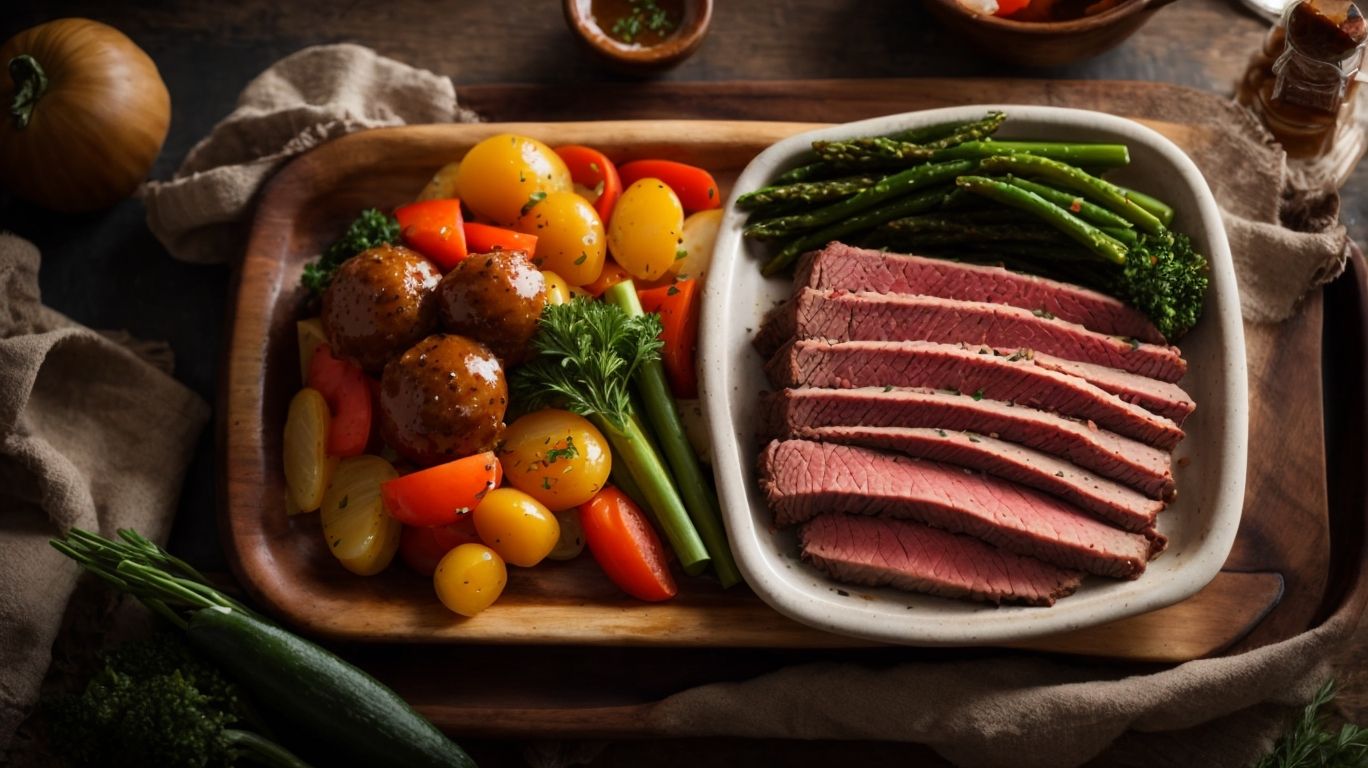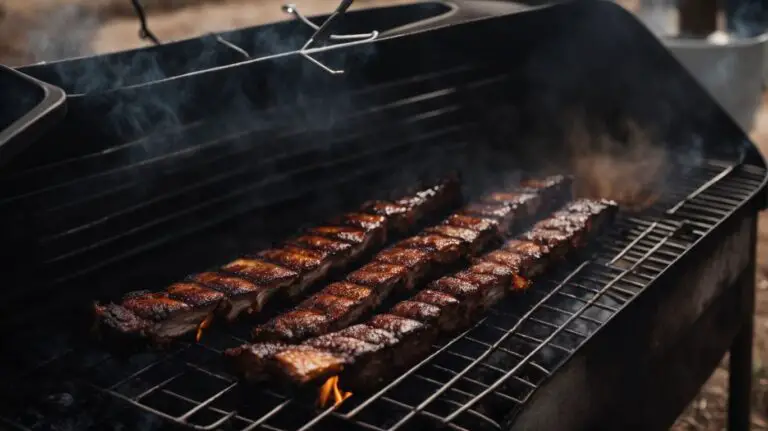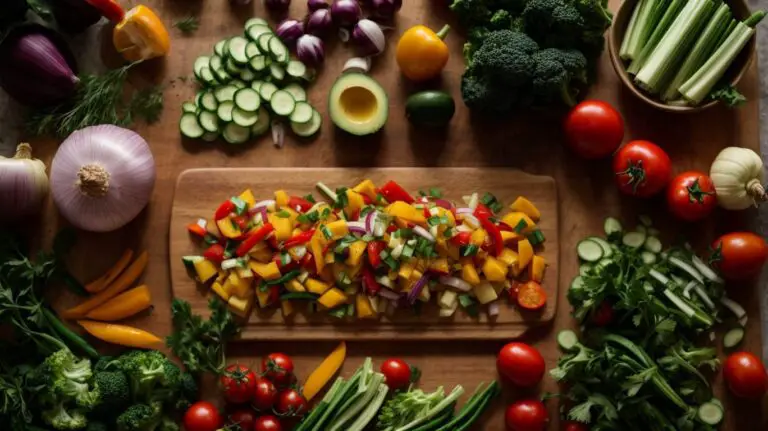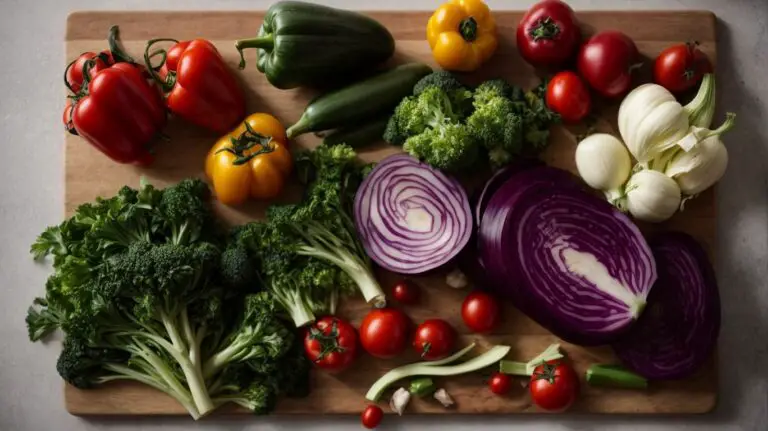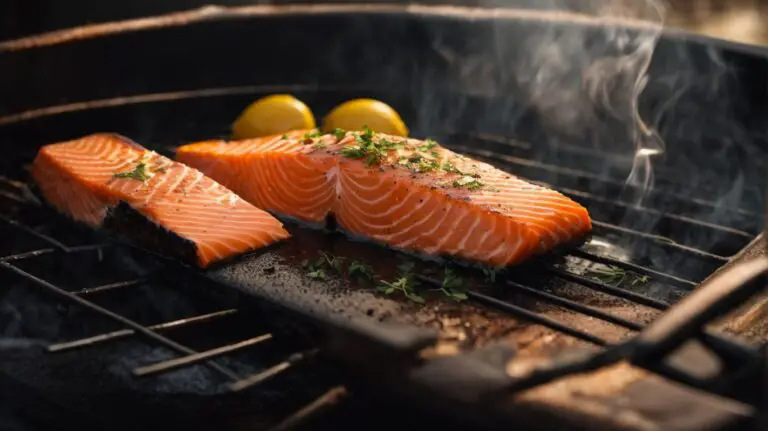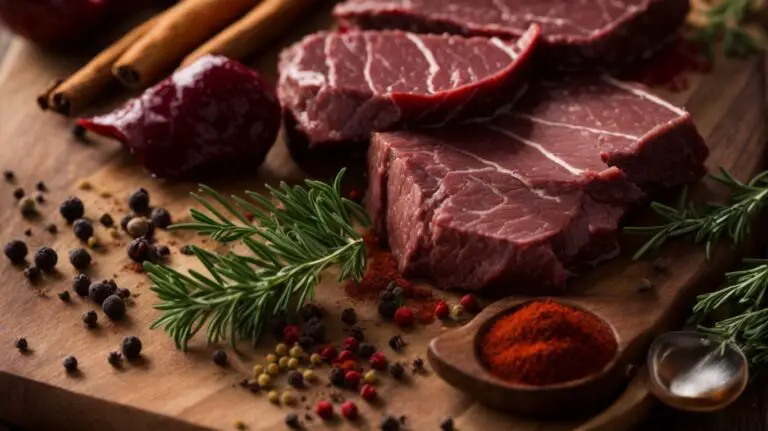How to Cook Corned Beef?
Curious about the origins of corned beef, the best cuts to look for, and how to prepare it for cooking? Look no further!
We explore the fascinating history of corned beef and provide tips on choosing the right type for your dish.
Discover different methods of cooking corned beef, from boiling and slow cooking to oven roasting and pressure cooking.
Learn helpful tips on achieving perfectly cooked corned beef and ideas for serving and storing leftovers.
Get ready to elevate your culinary skills with the ultimate guide on how to cook corned beef!
Key Takeaways:
What is Corned Beef?

Credits: Poormet.Com – Bradley Flores
Corned beef is a flavorful and tender meat that is often associated with traditional Irish cuisine, known for its delicious flavor and rich heritage.
This dish has deep Irish roots and is typically made from brisket, a cut of beef known for its tenderness when cooked. The beef is cured in a brine solution with coriander seeds, peppercorns, and other spices, giving it a distinctive taste and vibrant pink hue. Corned beef is a versatile ingredient that can be enjoyed in various forms, whether thinly sliced in sandwiches, served with cabbage and potatoes for a hearty meal, or incorporated into stews for added depth of flavor.
What Cut of Meat is Corned Beef?
Corned beef typically comes from the brisket cut of beef, which can be further categorized into variations such as flat cut, point cut, and beef round cut, known for its tenderness and flavorful qualities.
The brisket, from the lower chest of the cow, is a popular choice for corned beef due to its leaner cut and rich marbling that enhances tenderness and flavor.
- The flat cut, also known as the first cut, is leaner and denser with less fat marbling, making it a favorite for those looking for a leaner option.
- The point cut, also known as the second cut, is slightly fattier and more moist, offering a different texture and taste profile.
- Beef round cut, from the rear leg of the cow, is a leaner option compared to brisket but can still be tender when cooked properly, making it a versatile choice for corned beef recipes.
What is the History of Corned Beef?
The history of corned beef traces back to its deep Irish heritage, where it was prepared using traditional cooking methods and considered a time-tested option for creating delicious and savory dishes.
Corned beef holds a special place in Irish cuisine, with its roots dating back centuries. Traditionally, the meat was preserved through the process of brining, a method that involves soaking the beef in a seasoned saltwater solution. This not only enhanced the flavor but also increased the meat’s longevity.
The traditional cut for corned beef was the brisket, a tougher piece of meat that, through the brining process, became tender and flavorful. The cooking of corned beef was a ritualistic affair, with families coming together to enjoy the slow-cooked dish.
How to Choose the Right Corned Beef?
Selecting the right corned beef involves considering factors like opting for the brisket, known for its juicy and flavorful results, and choosing a cooking style that suits your preferences for creating delicious dishes.
Brisket is renowned for its tenderness and rich marbling, making it an excellent choice for those seeking exceptionally juicy meat. Its natural flavors infuse beautifully during the cooking process, rendering each bite succulent and delicious.
Whether you prefer slow-cooking methods like braising or pressure cooking for maximum tenderness, or opting for grilling or roasting to add a hint of smoky depth, brisket adapts well to various techniques, ensuring that your flavorful dishes turn out to perfection.
Experiment with different spices and seasonings for a personalized touch that elevates the taste profile of your corned beef.
What to Look for in the Label?
When examining the label of corned beef, it is essential to look for indicators that reflect its traditional Irish roots, promise a savory flavor profile, ensure a meticulous cooking process, and guarantee well-done, tender beef.
Corned beef, a classic Irish dish enjoyed worldwide, carries with it a rich history that traces back to the emerald hills of Ireland. The authenticity of the origin is not just a matter of pride but a crucial factor in capturing the savory essence that makes it distinct.
Understanding the cooking process is vital to unlocking the bold flavors intertwined with the tender meat. Ensuring a thorough cooking process is the key to achieving that perfect, well-done texture that melts in your mouth.
What is the Best Type of Corned Beef for Cooking?
For cooking purposes, the best type of corned beef is one that promises to be tender and succulent, making it ideal for slow cooking methods like using a crock pot with rich cooking liquid, resulting in a well-rounded and satisfying meal.
When selecting corned beef for cooking, opt for cuts that are well-marbled, ensuring a juicy and flavorful result. The marbling of fat throughout the meat helps maintain moisture and tenderness during the prolonged cooking process. The slow simmering in a crock pot allows the meat to break down gradually, becoming fork-tender and infused with the savory flavors of the cooking liquid.
Creating a well-rounded meal with corned beef involves pairing it with complementary ingredients like root vegetables, such as carrots, potatoes, and onions, which absorb the delicious flavors of the cooking broth while adding texture and nutrients to the dish.
What is the best way to Prepare Corned Beef for Cooking?
Preparing corned beef for cooking involves a brining process that enhances its delicious and flavorful qualities, especially when using leaner cuts that result in melt-in-your-mouth tender corned beef.
During the initial brining step, the key is to create the perfect salt and spice mixture to infuse the meat with rich flavors. This liquid is then used to submerge the corned beef for several days, allowing the flavors to penetrate and tenderize the meat thoroughly. The leaner cuts of corned beef, such as brisket, are ideal as they absorb flavors well and turn out incredibly tender when cooked.
To achieve that melt-in-your-mouth texture, slow cooking methods like simmering or braising are recommended. These methods allow the meat to slowly cook, resulting in a delectably tender and juicy corned beef that is perfect for sandwiches or served with vegetables.
Should You Rinse Corned Beef Before Cooking?
Rinsing corned beef before cooking can help reduce excess salt content, resulting in a more tender brisket with juicy meat, ensuring that the cooking techniques used yield well-done, flavorful beef.
This process of rinsing the corned beef is crucial in achieving the desired tenderness and juiciness, as it helps eliminate some of the salt that might overpower the natural flavors of the meat. By rinsing, you allow the juicy meat to shine through in the final dish, creating a succulent and flavorful experience for your taste buds. Whether you prefer to slow-cook the beef in a crockpot, braise it in the oven, or even try your hand at grilling, the rinsing step plays a key role in ensuring that your corned beef turns out perfectly cooked and delicious.
How to Remove Excess Salt from Corned Beef?
To remove excess salt from corned beef, consider soaking it in water for a while to achieve a flavorful result that preserves the savory flavor profile, especially when using traditional cuts for the cooking method.
Soaking corned beef helps balance the savory notes, making it palatable and enjoyable. When opting for traditional cuts like brisket or round, the meat absorbs flavors better, enhancing the overall taste profile. To do so effectively, cover the beef in cold water and refrigerate, changing the water every few hours. This process removes excess salt gradually without compromising the rich taste expected from a classic corned beef dish. Allow the meat to soak for at least 8-10 hours before cooking for optimal results.
What are the Different Ways to Cook Corned Beef?
There are several methods to cook corned beef, including boiling, slow cooking, oven roasting, and pressure cooking, each offering unique approaches to achieving tender and flavorful results.
Boiling corned beef is a traditional method that involves simmering the meat in water or broth until it is fork-tender.
Slow cooking is a preferred technique for many as it allows the flavors to develop over a longer period, resulting in a rich and succulent dish.
Oven roasting corned beef can create a beautifully caramelized exterior, adding depth of flavor to the meat while retaining its juiciness.
Pressure cooking is perfect for those seeking a shortcut with its faster cooking time, yet still producing remarkably tender and flavorful corned beef.
Boiling Method
The boiling method for cooking corned beef is a time-tested option that works well with leaner cuts, resulting in melt-in-your-mouth tender corned beef that retains its flavorful essence.
Boiling corned beef involves submerging the meat in simmering water along with traditional seasonings such as peppercorns, bay leaves, and cloves, slowly cooking it until it reaches that melt-in-your-mouth tenderness. This method of cooking has roots in ancient preservation techniques, where meat was cured with salt to extend its shelf life.
Using leaner cuts of corned beef not only reduces the overall fat content for a healthier dish but also allows for better control over the cooking process, ensuring that the meat remains succulent and flavorful throughout.
Slow Cooking Method
The slow cooking method for corned beef is perfect for creating flavorful dishes, utilizing traditional cooking techniques that require extended cooking times to achieve tender and juicy meat.
One of the most common traditional cooking methods for corned beef involves simmering the meat in a pot of water or broth for several hours. This slow and steady approach allows the tough cut of beef to break down gradually, resulting in a melt-in-your-mouth texture that is full of rich flavors. The extended cooking time is crucial in order to fully infuse the meat with the savory seasonings and spices that are typically associated with this classic dish. By allowing the beef to simmer gently over low heat, all the flavors meld together beautifully, creating a dish that is both comforting and delicious.
Oven Roasting Method
The oven roasting method for corned beef involves using simple ingredients to achieve a smoky flavor profile, resulting in well-done beef that is perfect for a popular traditional meal.
To begin this delectable process, gather your corned beef, a trusty oven, and some traditional seasonings to enhance the flavor. A common choice for seasoning is a mixture of peppercorns, bay leaves, and sometimes mustard seeds. These aromatic spices infuse the meat during the slow cooking process, creating a rich and flavorful taste that will satisfy any palate. As the corned beef slowly roasts in the oven, the meat becomes tender and succulent, while the exterior develops a mouthwatering caramelization that adds to its appeal. The end result is a savory dish that holds true to its roots, making it a favorite for festive occasions and family gatherings.
Pressure Cooking Method
The pressure cooking method for corned beef results in succulent meat that is tender and juicy, offering a quick yet effective way to achieve a dish that is both flavorful and satisfying, similar to using a slow cooker.
When you use a pressure cooker to prepare corned beef, the high-pressure environment helps break down the tough fibers of the meat, resulting in a melt-in-your-mouth texture that is incredibly tender and moist.
This technique saves time while not compromising on taste, making it a convenient option for busy home cooks looking to whip up a delicious meal without spending hours cooking.
- Compared to traditional cooking methods like simmering in a pot, pressure cooking retains more of the meat’s natural juices, infusing every bite with juiciness and rich flavor.
- Just like with a slow cooker, the long, slow cooking process in a pressure cooker allows the flavors to meld together, producing a deeply satisfying dish that is perfect for family dinners or special occasions.
Tips for Perfectly Cooked Corned Beef
Achieving perfectly cooked corned beef involves enhancing flavor with spices and vegetables, ensuring the right cooking time, and allowing the meat to rest before slicing to preserve its tenderness and juiciness.
When preparing corned beef, start by choosing high-quality meat with the right marbling for tenderness.
For flavor enhancement, you can add spices like peppercorns, bay leaves, and mustard seeds during the cooking process. These spices not only add complexity to the taste but also complement the natural flavors of the beef.
Incorporating vegetables such as onions, carrots, and celery in the cooking liquid can infuse the meat with extra layers of flavor.
The key to achieving a perfectly cooked corned beef lies in cooking it low and slow to break down tough fibers and render the meat ultra-tender.
After cooking, allow the corned beef to rest for at least 10-15 minutes before slicing. This resting period allows the juices to redistribute within the meat, ensuring a moist and flavorful result.
Adding Flavor with Spices and Vegetables
The boiling method for cooking corned beef is a time-tested option that works well with leaner cuts, resulting in melt-in-your-mouth tender corned beef that retains its flavorful essence.
Historically, boiling corned beef has been a popular cooking method as it allows the flavors to develop and the meat to cook slowly to perfection. Using leaner cuts of corned beef helps achieve a healthier dish without compromising on taste. This method ensures that the tender corned beef is moist and succulent, making it a delightful dish for any occasion. The slow simmering process involved in boiling corned beef helps break down the tough fibers, resulting in a melt-in-your-mouth texture that is truly irresistible.
Ensuring Proper Cooking Time
The slow cooking method for corned beef is perfect for creating flavorful dishes, utilizing traditional cooking techniques that require extended cooking times to achieve tender and juicy meat.
One popular traditional cooking method for corned beef involves simmering the meat in water with aromatics such as garlic, onions, and spices for several hours, allowing the flavors to meld together and infuse the beef.
This slow cooking process not only tenderizes the tough cut of meat but also allows the flavors to develop and intensify, resulting in a rich and succulent dish that is a favorite during holidays and special occasions.
Letting Corned Beef Rest Before Slicing
The oven roasting method for corned beef involves using simple ingredients to achieve a smoky flavor profile, resulting in well-done beef that is perfect for a popular traditional meal.
One key aspect of oven-roasting corned beef is the slow cooking process, allowing the simple ingredients to meld together beautifully. As the beef cooks, the fat renders, basting the meat and infusing it with flavor. This method not only tenderizes the beef but also creates a caramelized crust that adds depth to each slice.
The low and slow cooking method in the oven allows the beef to absorb the smoky essence, reminiscent of traditional fire-roasted meats. The savory aroma that fills the kitchen is a precursor to the delightful taste that awaits.
How to Serve and Store Cooked Corned Beef?
Serving and storing cooked corned beef involves skillfully slicing and plating the meat, knowing how to store leftover portions properly, and exploring creative ideas for repurposing any excess corned beef.
When plating the cooked corned beef, consider arranging the slices in an attractive pattern to enhance the visual appeal.
For storing leftover portions, wrap them tightly in plastic wrap or aluminum foil before placing them in an airtight container to keep them fresh for an extended period.
As for repurposing extra corned beef, you can use it in sandwiches, salads, or even incorporate it into hearty soups and stews for flavorful additions.
Slicing and Plating
Rinsing corned beef before cooking can help reduce excess salt content, resulting in a more tender brisket with juicy meat, ensuring that the cooking techniques used yield well-done, flavorful beef.
By rinsing the corned beef, you can remove some of the salt that might otherwise overpower the dish, leading to a more balanced flavor profile. The process of rinsing also contributes to the meat’s tenderness by allowing it to absorb flavors better during cooking. This simple step can make a significant difference in the final outcome of your dish, ensuring that every bite is succulent and flavorful.
Whether you choose to simmer your corned beef on the stovetop, slow cook it in a crockpot, or roast it in the oven, the pre-rinsing step remains crucial for optimal results. Each cooking technique offers a unique way of infusing the meat with rich flavors and achieving the desired level of doneness, ensuring a satisfying meal for you and your guests.
Storing Leftover Corned Beef
To remove excess salt from corned beef, consider soaking it in water for a while to achieve a flavorful result that preserves the savory flavor profile, especially when using traditional cuts for the cooking method.
In terms of soaking corned beef, it’s critical to allow enough time for the salt to leach out, usually overnight in the refrigerator. This process not only helps reduce the saltiness but also infuses the meat with a rich, savory taste that is enhanced by the traditional cuts commonly used in corned beef recipes.
Opting for traditional cuts like brisket or round ensures the meat stays tender and juicy, balancing the saltiness with the natural flavors of the beef. Soaking also aids in tenderizing the meat, resulting in a delightful texture that complements the savory flavor perfectly.
Ideas for Leftover Corned Beef
The pressure cooking method for corned beef results in succulent meat that is tender and juicy, offering a quick yet effective way to achieve a dish that is both flavorful and satisfying, similar to using a slow cooker.
Pressure cooking allows for the meat to retain its natural juices and flavors, resulting in a more succulent and flavorful outcome. The high pressure and heat help break down tough muscle fibers in the meat, leaving it tender and easily shredded. Unlike traditional cooking methods, pressure cooking significantly reduces cooking time without compromising on taste or texture, making it a convenient option for those looking to enjoy slow-cooker-like results in a fraction of the time.
Frequently Asked Questions
How to Cook Corned Beef?
To properly cook corned beef, follow these simple steps:
- Place the corned beef in a pot and cover it with water.
- Add in any desired spices or seasonings, such as bay leaves, peppercorns, and garlic.
- Bring the water to a boil, then reduce the heat and simmer for 2-3 hours.
- Check the meat for tenderness by inserting a fork; if it easily goes through, it’s done.
- Remove the corned beef from the pot and let it rest for 10-15 minutes.
- Slice the corned beef against the grain and serve with your favorite sides.
What is the best cut of meat for corned beef?
The best cut of meat for corned beef is brisket. It’s a tough cut of meat that becomes tender and flavorful when cooked low and slow.
How long should I cook corned beef in a slow cooker?
Corned beef can be cooked in a slow cooker for 8-10 hours on low or 4-5 hours on high. It’s important to check for tenderness before serving.
Can I cook corned beef in the oven?
Yes, you can cook corned beef in the oven. Preheat your oven to 300 degrees Fahrenheit, place the corned beef in a roasting pan, cover with foil, and cook for 3-4 hours. For a crispy exterior, remove the foil and broil for an additional 5-10 minutes.
How can I make sure my corned beef is not too salty?
To prevent your corned beef from being too salty, you can rinse it off before cooking. Also, adding in some vegetables, like carrots and potatoes, can help absorb some of the saltiness.
What are some creative ways to use leftover corned beef?
Leftover corned beef can be used in a variety of dishes, such as corned beef and cabbage rolls, corned beef hash, or a corned beef and Swiss sandwich. You can also chop it up and add it to soups or salads for an extra protein boost.

